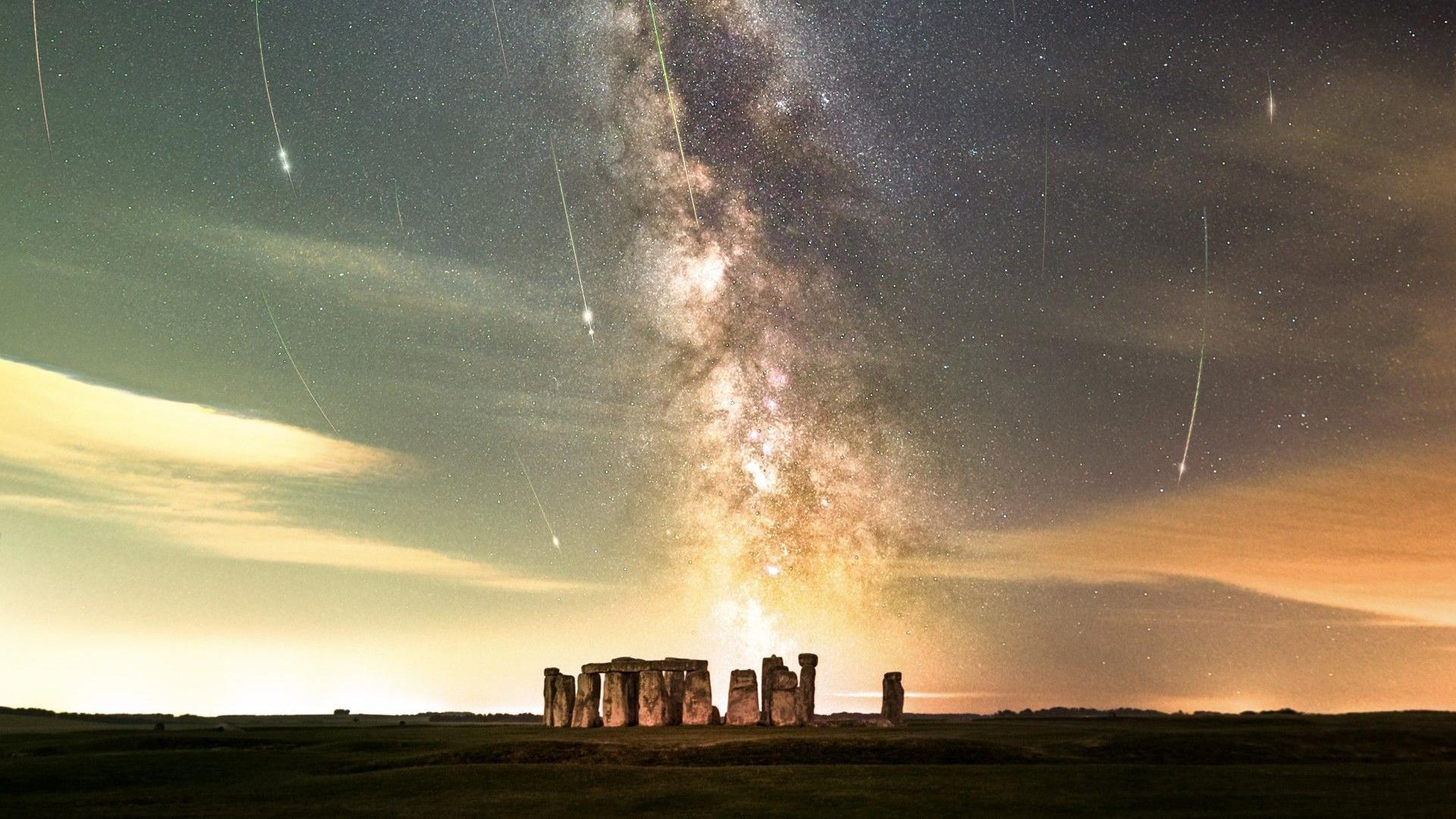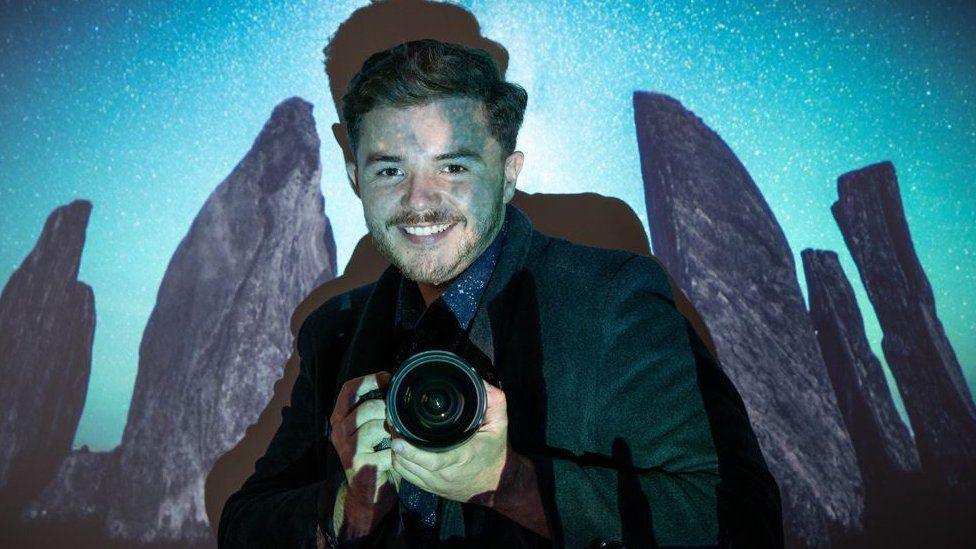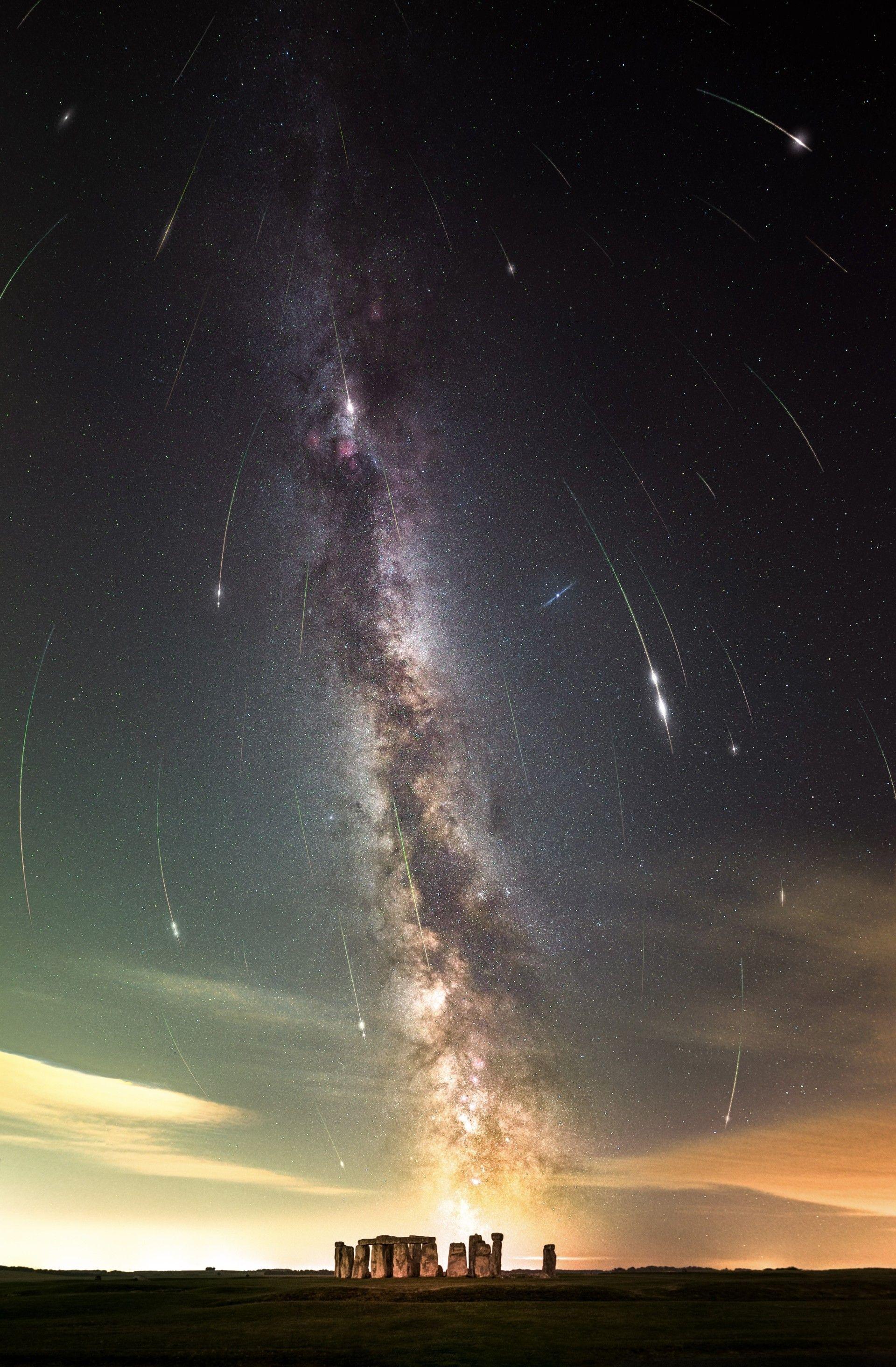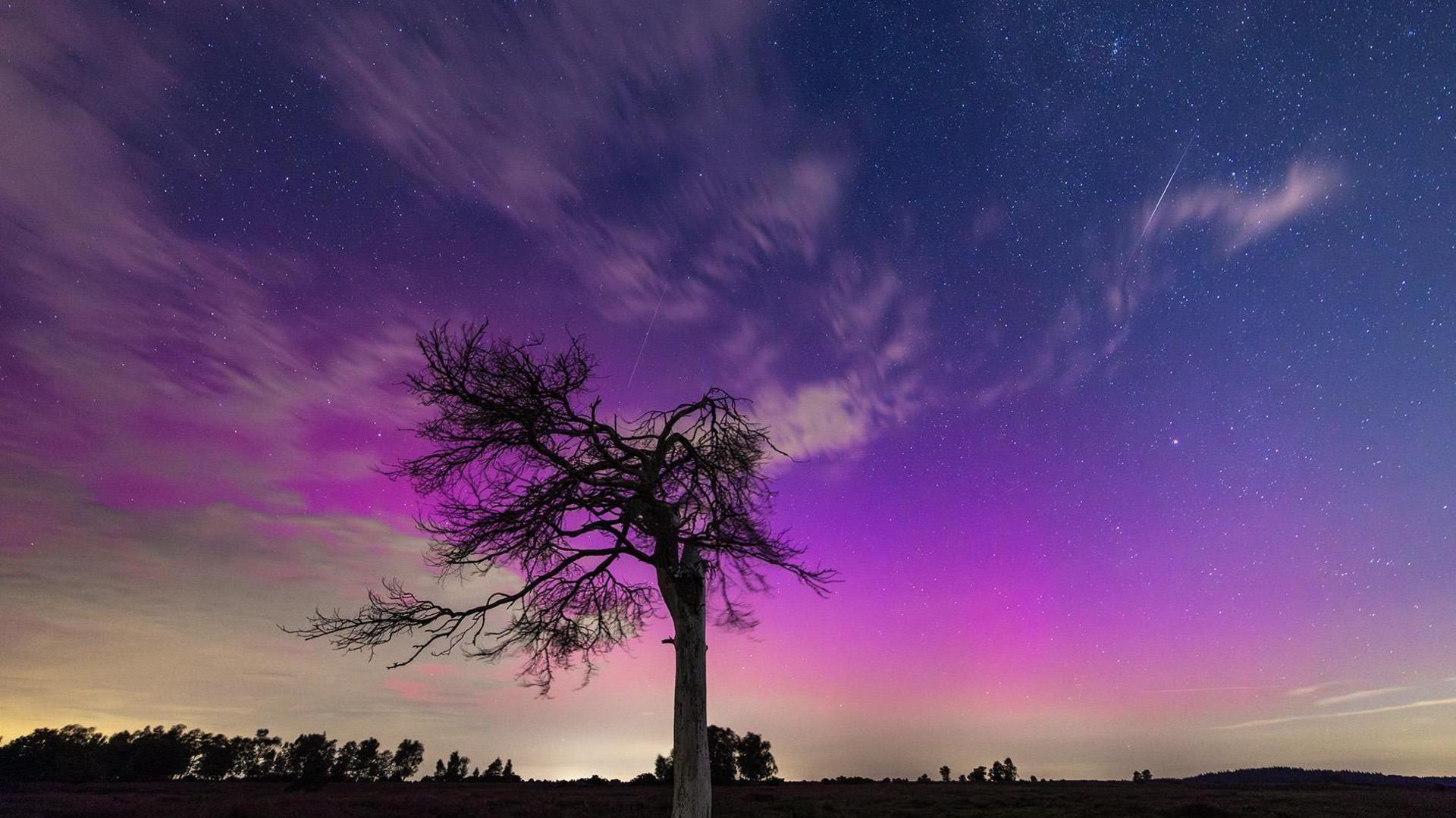Perseid meteor shower captured over Stonehenge

Josh Dury's image captures the Perseid meteor shower streaking through the sky above Stonehenge
- Published
A photographer has said it was an "immense privilege" to have his image of a meteor shower recognised as Nasa's astronomy picture of the day.
Somerset photographer, Josh Dury, took the shot on Friday as the Perseid meteor shower streaked through the sky above Stonehenge in Wiltshire.
Mr Dury also captured the central band of the Milky Way galaxy running nearly vertical through the centre of the image.
Reacting to getting recognised by Nasa, he said: "In the world of astronomy it can't get any bigger than that."
The astronomical agency nominates a picture each day which it believes best captures the fascinating depths of our universe, along with a brief explanation written by a professional astronomer.
Mr Dury explained he had received an email telling him his photo had been chosen.

Mr Dury has been testing out some of the latest equipment, which he used to capture the image above Stonehenge
"To be recognised by a body like Nasa. I'm just like wow. It's an immense privilege," he said.
The photographer, who won the Historic Photographer of the Year Award in 2023, said his phone had been "going off constantly" since Nasa shared his image.
"It's been quite positively overwhelming," he added.
The Perseid meteor shower occurs over several nights in mid-August.
It peaked on Friday but will still be visible on Monday and Tuesday night, especially as skies are expected to be clear.

Many images of meteors from this year's Perseids were captured separately and merged into a single frame
Mr Dury said he thought people's "best chance" to see the meteor shower was on Monday evening.
"The milky way is out, potential for the Northern Lights as well. Go somewhere dark and try and have a look out," he said.
And if you are hoping to snap a good photo, "get yourself a sun lounger out, enjoy the thrill of the night sky and give it a go", he added.
Related topics
- Published9 December 2023

- Published8 April 2024

- Published12 August 2024
